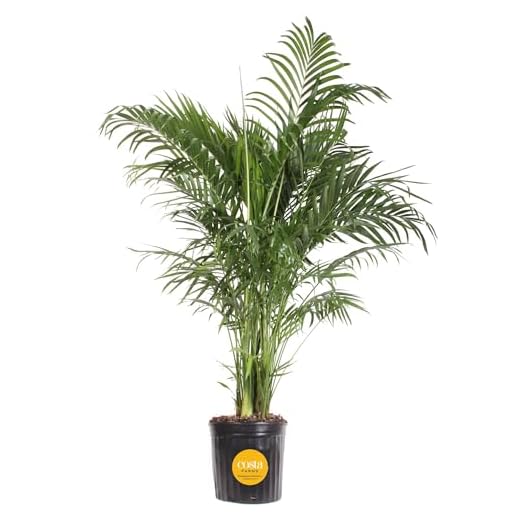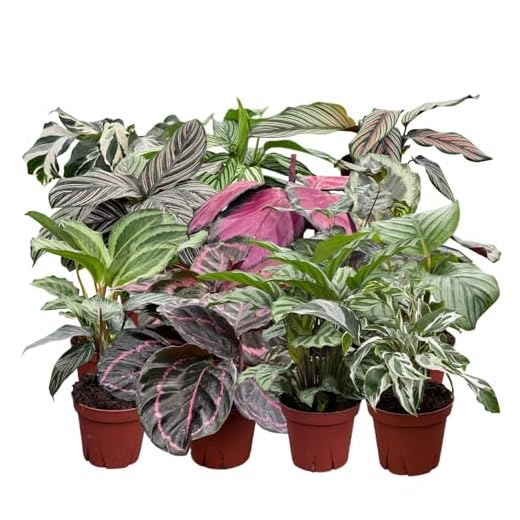

Rest assured, the green beauties in your home won’t pose a threat to your furry companions. Many plants, including those from the Marantaceae family, are non-toxic to our beloved pets. This means that if you have a curious kitty like me, you can relax knowing that nibbling on these leafy companions won’t lead to any health issues.
It’s crucial, however, to monitor any interaction between your playful pal and the greenery. While these plants are generally harmless, any plant material can cause mild stomach upset if ingested in large quantities. Therefore, it’s wise to discourage any excessive munching and ensure your pet has plenty of engaging toys to keep them entertained.
If you’re considering adding these leafy wonders to your home, keep in mind that they thrive in humidity and indirect light. Providing a suitable environment not only keeps your plants healthy but also adds to the overall ambiance of your living space, benefiting both you and your four-legged buddy.
Calathea and Feline Friends
These plants are a great addition to any home, as they won’t harm my furry companions. Ingesting leaves may lead to mild stomach upset, but overall, they are non-toxic. This means I can enjoy my leafy friends without worrying about my safety.
Best Practices for Plant Ownership
To keep my environment safe, it’s wise to place these plants out of reach. Even if they are non-toxic, curious paws might still cause a mess. Observing how my feline friends interact with any greenery ensures a peaceful coexistence.
Signs of Distress
If my buddies nibble on these leaves and show signs of discomfort, such as vomiting or lethargy, it’s time for a vet visit. Monitoring their health is crucial, even with safe plants around. Keeping an eye on their behavior helps maintain a happy and healthy household.
Understanding Toxicity Levels
Research indicates that the plants in question have minimal toxicity levels. Ingestion may lead to mild digestive upset, like vomiting or diarrhea. However, these symptoms are generally not life-threatening.
It’s vital to monitor any reaction after consumption. If your furry friend shows signs of distress, a visit to the vet is advisable for professional evaluation.
Many pet owners opt to place these plants out of reach as a precaution. Creating a safe environment ensures peace of mind while allowing greenery in your home.
Consulting resources such as the ASPCA’s list of toxic and non-toxic plants can provide further assurance. Knowledge of specific plants helps in making informed choices for a harmonious household.
Always prioritize your companion’s well-being. If unsure about any plant, opting for pet-friendly varieties is a wise choice. This guarantees a thriving environment for both plants and pets.
Common Symptoms of Calathea Poisoning in Cats
If a kitty nibbles on these plants, watch for specific signs. Immediate action is crucial if any symptoms arise.
Typical Reactions
- Vomiting
- Diarrhea
- Excessive drooling
- Loss of appetite
- Weakness or lethargy
Behavioral Changes
- Increased vocalization
- Restlessness or agitation
- Hiding or seeking solitude
Observing any of these symptoms warrants a visit to the vet. Early detection can lead to better outcomes.
Safe Indoor Plants for Cat Owners
If you’re looking to brighten up your home while ensuring the well-being of your furry companion, consider these options:
- Spider Plant: Easy to care for and non-toxic.
- Boston Fern: Adds humidity to the air and safe for curious noses.
- Ponytail Palm: An interesting shape that intrigues without harm.
- Bamboo Palm: Filters air while being completely pet-friendly.
- Areca Palm: A lush addition known for its air-purifying abilities.
When choosing greenery, always double-check sources for any potential hazards. For example, the best dry kibble for cats can help ensure your buddy’s nutrition stays top-notch, while safe plants keep the environment lively.
It’s also wise to monitor your pet’s interactions with new additions. If you notice any unusual behavior, consult a veterinarian. Always prioritize your cat’s health and comfort in your green-thumb endeavors.
Additionally, if you have an aquarium, you might want to consider how to maintain its quality. You can learn more about how to lower the hardness of aquarium water for a better habitat for your aquatic friends.
How to Prevent Cats from Chewing on Calathea
To keep my leafy friends safe, I suggest placing them in elevated spots, like shelves or hanging planters. Cats, including me, love climbing, but having plants out of reach can deter nibbling.
Using deterrent sprays specifically designed for pets can also help. These sprays have scents that are unpleasant to us felines but are harmless to the plants. A light misting around the base can make a big difference.
Alternative Distractions
Providing engaging toys or cat grass nearby gives me something to focus on instead of the greenery. Interactive playtime helps keep our minds busy and our attention away from tempting leaves.
Careful Placement
Consider placing these plants in areas cats don’t frequent, like home offices or rooms with less access. If a space is off-limits, I’m less likely to explore the plants there.
Alternatives to Calathea for Cat-Friendly Homes
For those looking to create a feline-friendly environment, consider spider plants. They are non-toxic and thrive in various light conditions, making them perfect for any room. Plus, they help purify the air, which is a bonus for both me and my human!
Another excellent option is the Boston fern. This lush greenery not only adds a nice touch to the decor but also is completely safe for curious paws. It prefers humidity, so it’s great for bathrooms or kitchens.
Ponytail palms are also a fantastic choice. They have a unique appearance and require minimal care. I enjoy lounging around them, and they pose no threat to my health.
Parlor palms are small and elegant, fitting well into various spaces. They are resilient and can tolerate low light, providing a cozy vibe without any risk to me.
Lastly, consider the African violet. While not a typical houseplant, these colorful flowers are non-toxic and can brighten up any room. Just be sure to keep them out of my reach, as I’m quite the adventurous kitty!
Tips for Caring for Calathea Around Pets
Place plants on higher shelves or in hanging pots to keep them out of reach. This simple adjustment can prevent curious paws from exploring them.
Consider using plant barriers or decorative screens. They can not only enhance your home decor but also create a physical barrier between your furry friend and the foliage.
Regularly inspect leaves for any signs of nibbling or damage. If you notice any chewing, take immediate action to redirect your pet’s attention to their toys or treats.
Introduce pet-friendly alternatives nearby. By placing safe options, like cat grass or catnip, in close proximity, you can satisfy their need to chew without compromising safety.
Keep watering habits consistent. An overwatered plant may attract attention due to drooping leaves, which can entice pets to investigate.
Engage your furry companion with interactive playtime. A well-exercised pet is less likely to seek out plants for entertainment.
Educate yourself about your pet’s behavior. Understanding what draws them to certain plants can help you make informed decisions about their placement.
Consider using citrus-scented sprays on the leaves. Many cats dislike citrus, which can deter them from approaching the plants.
Finally, monitor your pet’s health regularly. If you suspect any issues arising from plant interactions, consult a vet promptly for guidance.
When to Consult a Veterinarian About Plant Ingestion
If you suspect your furry friend has nibbled on a plant, seeking veterinary advice is crucial. Watch for any unusual behavior or signs of distress. Symptoms such as vomiting, drooling, or lethargy warrant an immediate consultation.
Key Indicators for Veterinary Attention
Monitoring a few specific symptoms can help determine if a vet visit is necessary:
| Symptom | Action |
|---|---|
| Vomiting | Contact a vet if it persists or is accompanied by other symptoms. |
| Excessive drooling | Seek advice, especially if it occurs suddenly. |
| Loss of appetite | Consult a veterinarian if it lasts more than 24 hours. |
| Lethargy | Immediate consultation is recommended if your pet appears unusually tired. |
| Diarrhea | Contact the vet if it happens frequently or is severe. |
Steps to Take Immediately
In case of suspected ingestion, gather information about the plant. Knowing the species can help the vet assess the situation more effectively. If possible, take a sample or a picture of the plant to show the veterinarian.
Time is of the essence. Prompt action can make a significant difference in treatment options and outcomes. Don’t hesitate to reach out for professional help if anything seems off.









